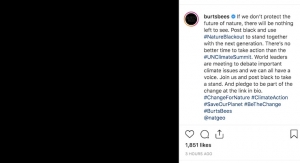Elle Morris, CEO, Snapdragon11.21.19
I’ve been a beauty junkie since I was a young girl; to me, the transformational power of makeup was mesmerizing and something I needed to experience (so much so that I took the makeup palette that came with my “Barbie” Makeup Head and used it on my 7-year-old face, then wore it proudly into the second grade).
It was the ’70s so no one questioned my quest for adult feminine beauty; after all, it was completely natural for a 7-year-old girl to aspire to be as beautiful as she could be. I was a teen in the ’80s, so wearing ridiculous amounts of makeup in garish shades was all the rage; my passion flourished. And as a middle-aged adult, I’m still smitten by all-things beauty: skincare, makeup, nails.
However, now as the mother of a soon-to-be 14-year-old young woman, my daughter has watched me obsess about beauty products since birth (literally as an infant she would watch me get ready to go to work every morning). She has an interest in makeup and skincare but she is by no means fixated on it (everything I have read tells me that my behavior should have either caused her to be repelled by all things beauty or insecure and hooked on it).
I look at her in awe because she is really secure about herself; she wears what she wants and doesn’t care what her peers may say. She also wears makeup occasionally when the mood strikes her but it’s always minimal and nothing overdone.
Conversely, I see some of my friends’ daughters who are the same age (on social media in family photos) and I am shocked to see how made up they are (granted these are in various regions of the country). Some of these 12,13- and 14-year-old girls look like they are going to night clubs.
Their moms don’t look this way, so where are they getting their beauty cues?
Embracing Gender Fluidity
Taking this a step further, our culture has embraced the concept of gender fluidity, so there’s a whole new group of consumers to market to.
No longer are beauty brands targeting young women, they are trying to appeal to a much broader audience of non-binary, trans and queer consumers. But at what age should this quest for new consumers and building brand loyalty begin?
Skincare brands have begun talking to young girls; this makes sense because when tweens are in the pre-pubescent stage their skin needs change.
For some, there is an awkward period of acne, or oily skin, creating previously unrealized issues which can impact self esteem. Brand examples marketing to this younger audience include Burt’s Bees to Clean and Clear to Dude Facial wipes for young men. Major opportunities exist for big mass brands like L’Oréal, Olay and Neutrogena who are late to the game, to build a loyal brand base at an early age.
Attracting the Youngest Makeup Fans
In cosmetics, CoverGirl and Bonne Bell, two brands which used to be a young woman’s first go-to brands now have legions of competition. Pixie by Petra by Target has very youthful offerings – several of which are recommended on various parent’s magazine’s pages, which adds credibility.
Burt’s Bees is smartly seeking to build the loyalty of younger consumers through their more natural offerings, an interest area for Gen Z’s. This generation is hugely concerned with the environment and what they are consuming, so a brand that dedicates themselves to these ideals is bound for success in the short and long term.
There’s even an upscale brand for kids ages 6-15 called “Petite n’ Pretty” (shown above); this brand targets moms who want their kids to have the best quality makeup similar to what they purchase for themselves from MAC, Stila or Smashbox.
Premium ingredients and first-rate packaging are what separate Petite n’ Pretty from other brands. While they are not inexpensive, the discerning mother will buy only the best for her kids and doesn’t fret about products priced $16 to $24.
How young is too young?
Wearing makeup is no longer about age, rather about how children and tweens want to express themselves.
With the bevy of offerings that are available to the youngest generation and their access to social media, surely more brands will be entering the fray.




























